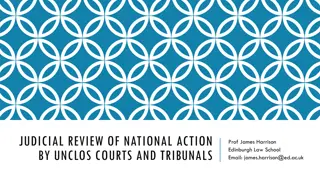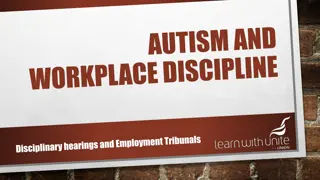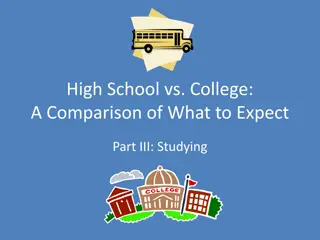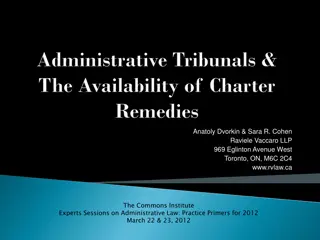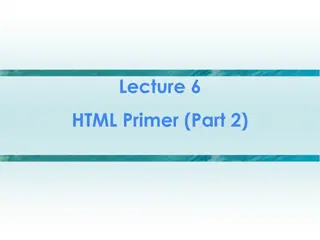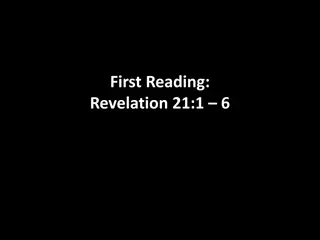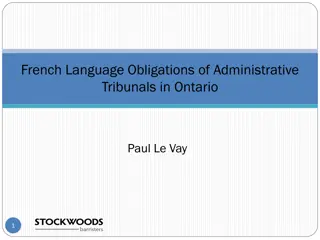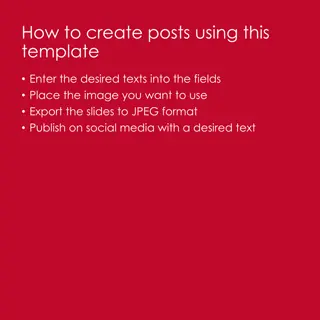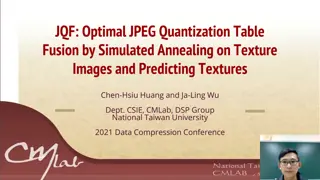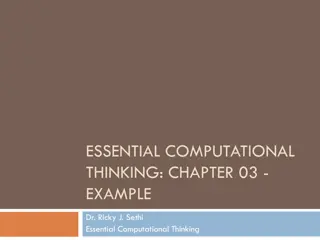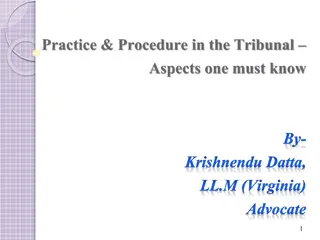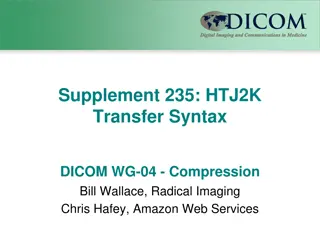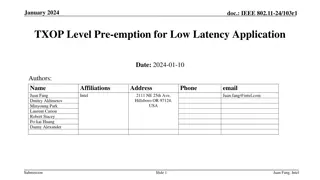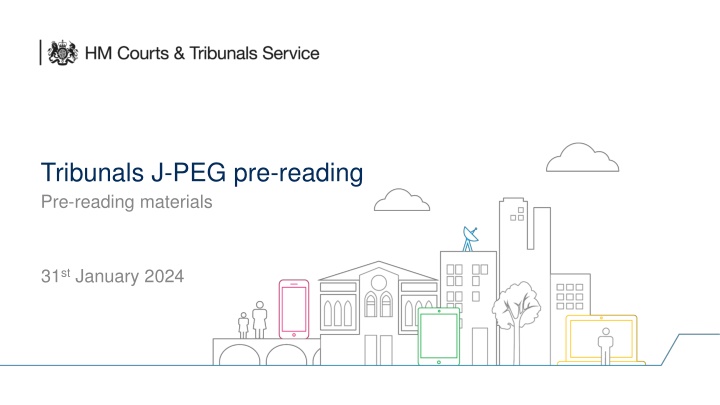
HMCTS Public User Engagement Model Review and Reform
Discover the evolution of the HMCTS Public User Engagement model through reform initiatives and reviews. Learn about the key priorities, agenda items, and stakeholder engagements in this comprehensive pre-reading material for the upcoming tribunal sessions on January 31st, 2024.
Download Presentation

Please find below an Image/Link to download the presentation.
The content on the website is provided AS IS for your information and personal use only. It may not be sold, licensed, or shared on other websites without obtaining consent from the author. If you encounter any issues during the download, it is possible that the publisher has removed the file from their server.
You are allowed to download the files provided on this website for personal or commercial use, subject to the condition that they are used lawfully. All files are the property of their respective owners.
The content on the website is provided AS IS for your information and personal use only. It may not be sold, licensed, or shared on other websites without obtaining consent from the author.
E N D
Presentation Transcript
Tribunals J-PEG pre-reading Pre-reading materials 31st January 2024
Agenda item Time Item Presenter Chairs: Tracy Parker-Priest Emma Petty Miriam Davidson Welcome and Introductions 1 13:00 Terms of Reference Review HMCTS Engagement Model Tribunals Jurisdictional Public Engagement Group ToR feedback and agreement Miriam Davidson 2 13:15 Tracy Parker-Priest Emma Petty Tribunals Overview and Key Priorities 3 13:35 Tribunal Breakout rooms (the next slide contains details and links to pre-reading materials assigned to each Tribunal breakout session) Please could stakeholders read their assigned tribunal breakout material (if unsure, please refer to breakout room list description) Service Managers 14:00 4 Tracy Parker-Priest Emma Petty Miriam Davidson Summary of discussions 15:00 5 AOB 15:45 6 Suggestion for future agenda items Date of next meeting The HMCTS Public Engagement team can be reached at: PublicEngagement@justice.gov.uk
HMCTS Public User Engagement Model 31st January 2024
HMCTS Reform and Public User Engagement Background The Public User Engagement (PUE) team has been part of the HMCTS Reform Programme since 2016. Over the course of reform five Public User Engagement Groups were established to: Ensure the voice of user was heard within the reform programme Enable feedback from, and co-design with, organisations that support public users Reflecting these aims the groups were structured around user types: Litigants in Person Victims and Witnesses Defendants Children and Young People (disbanded 2019) Focus on specific equalities and inclusion of user groups During 2022 we carried out a review of the current model of public user engagement to enable the development of a future operational model to support HMCTS, post-reform. This review was limited in scope to HMCTS operational reform, not policy development.
Public User Engagement Review Within the review we looked at what worked well and how engagement could change and be improved going forward. We held discussions with members of PUE groups, colleagues across HMCTS, MoJ and other government departments to understand best practice. Six key themes for a post-reform model of PUE emerged from these conversations: Broaden engagement Deepen engagement Evolve and reframe PUE groups Establish PUE links to Service Boards Develop more consistent Comms across HMCTS Ensure user insights are captured and acted upon more effectively
Public User Engagement objectives and key requirements? Public User Engagement's ultimate goal is to help HMCTS improve our services (design and delivery) by understanding the experiences that public users have. Public engagement focuses on the experience of public users and seeks insight from a range of stakeholders (predominantly from the user advice & support sector), enabling HMCTS to: Gain feedback and co-design of changes to services Provide insight on service performance Identify where service improvements are needed Identify where larger strategic change projects are needed Consider equality implications of changes to help maintain access to justice Consider where HMCTS might need to respond to issues in society Public engagement provides dialogue with the advice & support sector to facilitate: Discussion of changes to HMCTS services or operations, to help HMCTS consider the needs of the advice and support sector and to enable them to provide support to users Our approach to public user engagement needs to: Ensure insight from engagement inputs into HMCTS decision making and governance Be flexible, to adapt to changes and projects across HMCTS
Proposed Post Reform Engagement Activity Therefore we are pivoting from structuring engagement by user type to service type/jurisdiction. In order to fulfil the objectives we identified three levels of engagement; strategic, user insight and dialogue. Tier 1 Strategic Engagement Group Stakeholders: 1-2-1 engagement Strategic HMCTS Service Boards Jurisdictional Engagement Group Task & Finish Groups User Insights: feedback & co-design Direct Engagement Stakeholder Network Partnerships Dialogue e.g. Events, Conferences
Strategic Public Engagement Group (SPEG) Purpose: A group of senior members predominately from the third sector who are justice system subject matter experts, focusing on cross-cutting and strategic issues, to provide valuable feedback and insight. Key objectives are: 1. Understand where upstream challenges are emerging in society, help identify how HMCTS could best respond to these issues and highlight where HMCTS change projects may be needed as a result. 2. To provide a cross jurisdictional view from the third sector, providing feedback and insight on HMCTS change projects and service delivery. 3. To consider equality implications of changes across HMCTS, to help the organisation maintain access to justice Chairs: Jointly chaired by The Hon. Mr Justice R Knowles and (interim) Miriam Davidson (Head of User Strategy, Inclusion and Engagement). Frequency: 3 times a year, more depending on business need.
Jurisdictional Public Engagement Groups (JPEG): Overview Purpose: To provide a jurisdictional forum for engagement between HMCTS and practitioner level representatives from a range of stakeholders across the justice system, with a focus on the public user experience and access to justice. The forum will provide the opportunity for dialogue and collaboration between HMCTS and stakeholders to enable: 1. Stakeholders to provide insight and feedback to HMCTS on service performance and public users needs and experience of our services. 2. HMCTS to understand user needs and ensure proposals for service improvements are from a user perspective. 3. Opportunities for co-design between stakeholders and HMCTS. 4. HMCTS to gain wider insight to inform considerations of equality implications of service changes within the jurisdiction and help to maintain access to justice. Chairs: Tracy Parker-Priest (Deputy Director Tribunals), Emma Petty (Deputy Director and Service Owner of Social Entitlement, Health, Education and Social Care, General Regulatory, Property and Employment Tribunals), Miriam Davidson (Head of User Inclusion) Frequency: 3 times a year, or more depending on business need Meeting content: Generated from sources including project and design activity, performance data, observations on user experience, HMCTS user insight & research and service strategies. We are open to members proposing agenda topics or items to co-present on issues they feel will add value.
Tribunal JPEG Meeting Structure: Each meeting will cover a cross-tribunal item at the beginning of the session, aiming to ensure that every session always has at least one item of relevance to all stakeholder members. The meeting will then be divided into up to four breakout rooms to cover service specific items. The services covered will be chosen depending on stakeholder interests and HMCTS needs for feedback. Most stakeholders' members specialise in one tribunal enabling us to automatically invite you to the relevant breakout room. For stakeholders where there is no tribunal specialisation, or where there are more than one tribunal interest, we will ask you to choose which room to join as we issue the agenda and pre-reading papers minimum 5 days before the meeting. Feedback: A short feedback survey will be sent at the end of each meeting. This will provide an opportunity for everyone to comment on how they would like us to improve the next session. The feedback will also provide all stakeholder with the opportunity to express, either the tribunals or the specific subject matter they would like to discuss at the following session. The chairs will decide from the suggestions which items to bring, based on general demand of the group, as well as status of the work.
Talking Points Terms of Reference: Are you content these are fit for purpose? Do you have any suggested changes? Meeting format: We propose, due to the number of stakeholder members which are based across the country that all meeting are held remotely. Are you content with this? Or would you appreciate an in-person meeting? JPEG membership: The focus is on practitioner level discussions, but also drawing on those who can provide other insights on user experience for the jurisdiction. Are there any other sectors or organisations which you think should be covered in the group s membership? Do we need to look at the balance of organisations on the group? For example, between local & national; generalist & specialist; and practitioner & other stakeholders Meeting Topics: We will bring key pieces of work to the group, but we also want you to be able to suggest agenda items. What things matter most to the public user that we could discuss? Any other questions or comments?
Breakout Room 4 Employment Tribunal Project Litigant in person portal
Introduction/Background/Key Themes In line with the HMCTS Reform Programme, We re designing a digital system for the employment tribunal to make the process simple, fair and accessible for all users. We ll reduce the need for paper from employment tribunal claims (while retaining the ability to submit claims offline) by creating an effective digital system. Users will be able to manage evidence and present cases and will be designed around those who use it. We want to make sure that people working across tribunals have access to the correct information in a timely manner.
Main outcomes We ve achieved several main outcomes so far, including: user researchers working closely with the project team, staff, legal professionals and the judiciary to inform the technical build stage of our reform service - starting with the litigant in person journey for single claimants. user researchers working with external stakeholders such as Acas, the Department for Business and Trade (DBT) and legal professionals to provide feedback on the latest design work the release of a new ET1 application form for litigants in person (LiP) using an online portal at four early adopter sites - Leeds, Glasgow, Bristol and Nottingham. This gives the LiP claimants access to the new portal to view the status of their claim as it progresses through the system a new process for represented respondents to submit the ET3 response form via the MyHMCTS portal at the four early adopter sites. Case Progression which allows claimants and respondents within the current Reform criteria to submit various applications online, at four early adopter sites, rather than by email or post.
The Projects approach: The Project is currently in the testing phase in 4 early adopter sites. The aim is to build a working version of the service based on our early designs. Testing allows us to: have more control over the type of user. restrict the volume of transactions. It results in quicker feedback before we roll the service out to a wider audience. The releases to date will test the reform technology with a limited number of eligible claims at the four early adopter sites. The focus is on claims issued by a litigant in person using the enhanced ET1 (claim form) claim journey, and legally represented respondents using the new online ET3 (response form) response journey, with both being able to submit various applications online. It will also enable a new way of working for our staff and judiciary, so that they can action the acceptance and vetting stages for single claims on the Open Track more quickly.
The Projects approach: The Project is currently preparing for transitioning to a live service. Currently it is being used at small scale pilot, enabling us to quickly collect feedback and adapt accordingly. The service is not currently open to everyone, we have restricted access to 4 sites (Nottingham, Glasgow, Bristol and Leeds This enables us to: have more control over the type of user. restrict the volume of transactions. It results in quicker feedback before we roll the service out to a wider audience. The releases to date will test the reform technology with a limited number of eligible claims at the four early adopter sites. The focus is on: 1. claims issued by a litigant in person using the enhanced ET1 (claim form) claim journey 2. legally represented respondents using the new online ET3 (response form) response journey It will also enable a new way of working for our staff and judiciary, so that they can action the acceptance and vetting stages for single claims on the Open Track more quickly.
Talking Points: The next few slides will show videos demonstrating the service. They will walk you through how a litigant in person can submit a claim using the customer facing portal and how to submit an application to the Tribunal. Please do consider the following questions when watching these: If you have used the new portal, what did you think of its functionality? What do you think your service users will find helpful? What support might your service users need to use the portal? Are there any changes that you think would benefit users? Is there anything else that you would like us to take into consideration?


